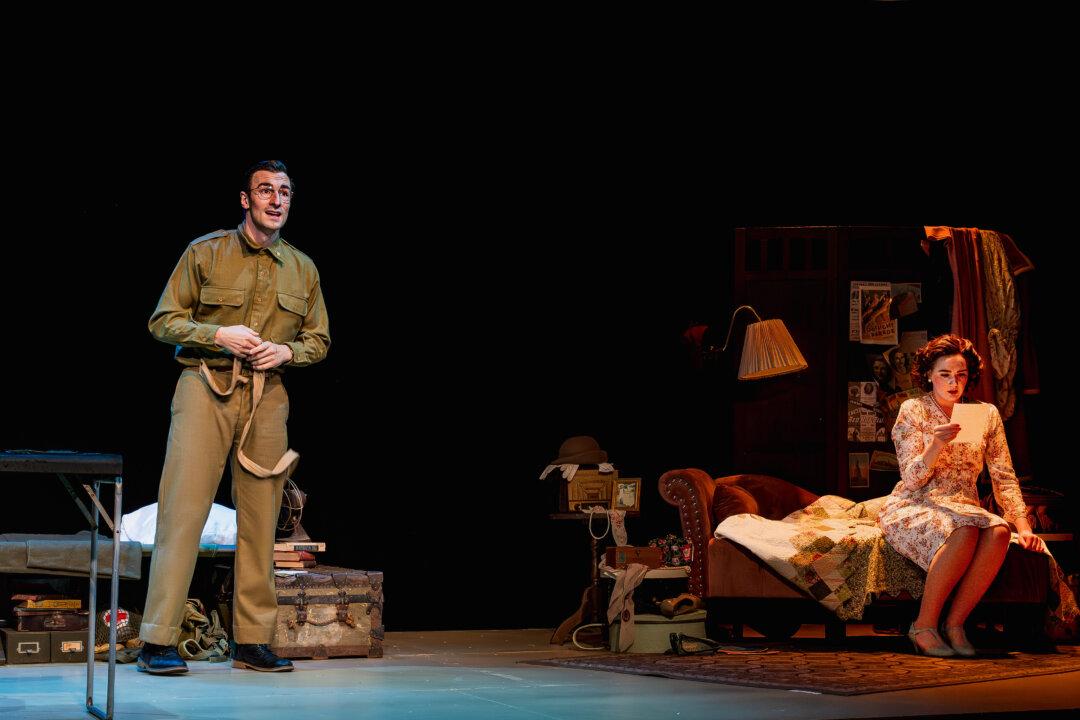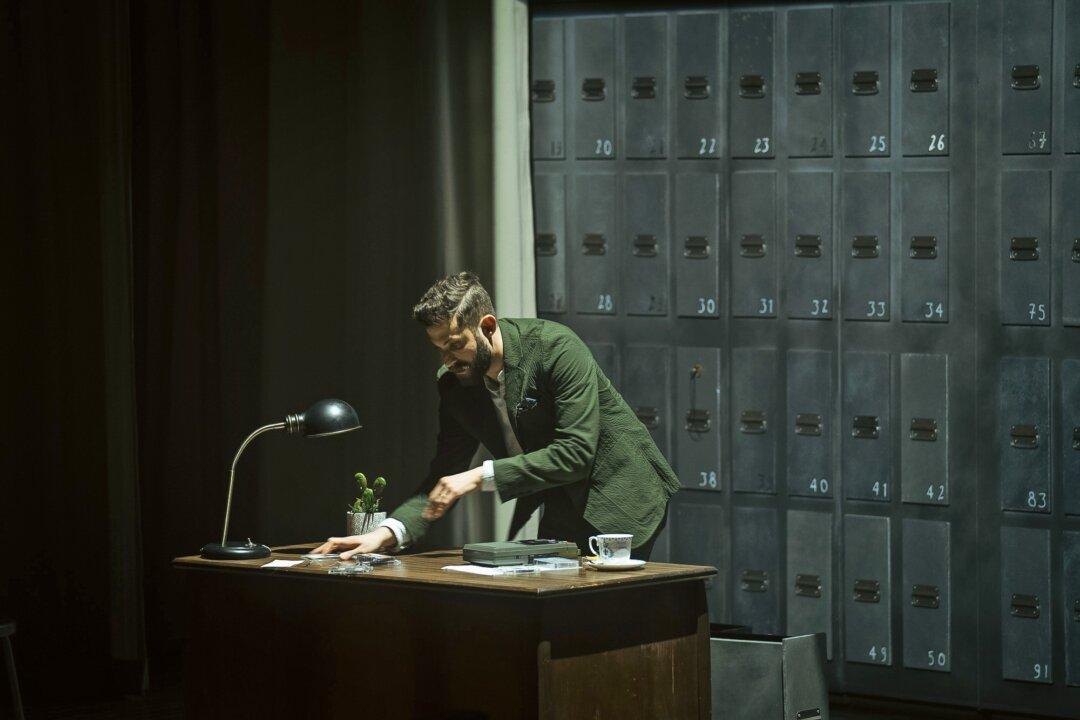NEW YORK—Offering what should hopefully become a holiday staple, the Irish Repertory Theatre presents a revival of its 2011 musical “The Streets of New York. ” The piece harkens back to the days of the melodrama with its absorbing take on social status and how far the human spirit can be tested. Adapted and directed by Charlotte Moore, the musical is based on an 1853 play by Dion Boucicault.
The story begins in 1837 when sea captain Patrick Fairweather (Daniel J. Maldonado) entrusts his fortune to Gideon Bloodgood (David Hess) the manager of a prominent New York bank. Unbeknownst to all, the institution is on the verge of ruin, thanks to Bloodgood’s mismanagement. Bloodgood was actually preparing to flee the country when Fairweather’s sudden death prompts him to seize the captain’s fortune and restore himself and the bank to solvency.
The story then jumps 20 years to the financial panic of 1857. This event has left the remainder of the Fairweather family in desperate financial straits. Patrick’s wife Susan (Amy Bodnar) and children Paul (Ryan Vona) and Lucy (DeLaney Westfall) are forced to take shelter with the lower-class Puffy family (Richard Henry, Polly McKie, Kerry Conte) so they can have a roof over their heads.

The Fairweathers’ one remaining hope is Lucy’s well-to-do-fiancée Mark Livingston (Ben Jacoby). However, Livingston himself has lost everything thanks to some bad business investments. Livingston is so ashamed of his ruination that he has been desperately trying to keep the news from everyone.
The Fairweathers, Puffys, and Livingston’s financial future depend on the mercy of Bloodgood, as it his bank to which they all owe money. Bloodgood’s rather unsavory reputation has caused him to be blackballed from polite society. This matter that does not sit well with his social-climbing, free-spending daughter Alida (Amanda Jane Cooper), the one person in this world that Bloodgood truly loves.
Alida is determined to gain upper-crust acceptance by marrying Livingston—once she persuades her father to forgive all his debts. It’s an arrangement Livingston feels he must agree to, as it would allow him to help those he truly he cares about. Matters are further complicated by the sudden arrival of Brendan Badger (Justin Keyes), Bloodgood’s former clerk and the only other person who knows what happened to the Fairweather fortune.

The Importance of Social Position
Seamlessly combing elements of comedy and drama, “The Streets of New York” is a case study of the importance people place on social position. This is not only true for someone like Alida, who performs a wonderfully satirical number about being rich, but also for the Fairweathers and the Puffys. Each group is ashamed of their own circumstances, with neither feeling worthy enough to be in the same room with the other. A scene when the two families are sitting down to eat together is particularly telling, as are moments when Susan and her children are reduced to begging on the street.
At the same time, this is also a story about redemption. There is the chance to regain what has been lost, to do right by those previously wronged, but also the importance of forgiving others. Tied into this is the belief that everyone has some good inside.
The overall story is quite appealing, with multiple characters to root for or hiss at. At the same time, the power of Ms. Moore’s score cannot be underestimated. The musical numbers range from the very mournful and gripping title tune, to ballads sung by Lucy and Mark as they demonstrate their love for each other. There’s the very rollicking duet by Bloodgood and Badger as they sing about the joys of being a villain (one of several times the show breaks the fourth wall). Whatever the style, each number has a distinct purpose, with none feeling simply dropped into the story just for the sake of adding an additional number.
Credit must also go to choreographer Barry McNabb who does a great job throughout, and in particular with the different ensemble numbers when the entire cast moves about the relatively small stage.
Standouts among the cast include Bodnar, Vona, and Westfall, all of whom bring a great emotional weight to their characters, especially when pushed to the brink of total despair with seemingly no way out. Westfall and Vona demonstrate a strong romantic chemistry in their scenes together. Conte does quite well in the comic role of Dixie. Hess is fine as the Bloodgood, striking the perfect note with a final admission of how salvation may not be possible for everyone.

A powerful look at how people see themselves through the prism of social class, “The Streets of New York” is a heartfelt look at family, friendship, and the sacrifices one is prepared to make in the name of love.




